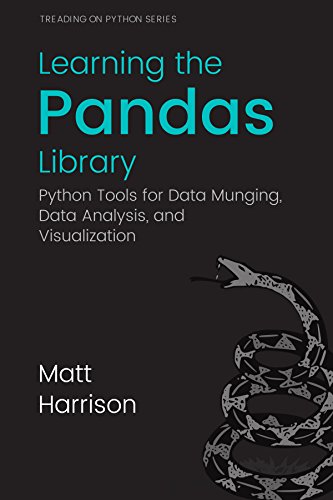Learning the Pandas Library: Python Tools for Data Munging, Analysis, and Visualization Link to heading
Summary Link to heading
“Learning the Pandas Library: Python Tools for Data Munging, Analysis, and Visualization” by Matt Harrison is a practical guide for data scientists, analysts, and enthusiasts who seek to harness the power of the pandas library in Python. The book covers the essential features and functionalities of pandas, providing comprehensive insights into data manipulation, cleaning, transformation, analysis, and visualization. Through a series of examples and hands-on exercises, readers are taught how to efficiently handle large datasets and derive meaningful insights using pandas.
Review Link to heading
Matt Harrison’s book is highly regarded for its clear and concise presentation of technical material, making it accessible for both beginners and more experienced programmers. The structured approach in explaining the capabilities of the pandas library, alongside practical examples, helps in solidifying the concepts. One of the notable strengths of the book is its focus on real-world applications and its ability to cater to different skill levels. However, some readers might find the scope somewhat limited as it is highly focused on pandas and does not delve into other complementary Python libraries or broader data science topics.
Key Takeaways Link to heading
- Data Manipulation: Understanding pandas’ core data structures, Series and DataFrame, is essential for effective data handling.
- Effective Munging: Techniques for cleaning and transforming data to prepare it for analysis.
- Data Analysis: Utilizing pandas for grouping, aggregation, and statistical analysis to derive insights.
- Visualization: Employing pandas to create basic plots and visual representations of data.
- Performance Optimization: Best practices for increasing the efficiency of data operations using pandas.
Recommendation Link to heading
“Learning the Pandas Library” is highly recommended for data professionals and enthusiasts who wish to deepen their understanding of data analysis using Python. It is particularly beneficial for those new to the pandas library or looking to refine their skills in data manipulation and exploration. The book’s practical orientation makes it a valuable resource for academic purposes as well as for real-world data projects.
